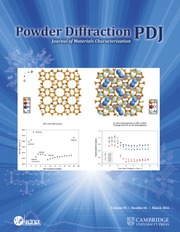I. INTRODUCTION
Palovarotene (marketed under the trade name Sohonos) is administered orally for treating and reducing connective tissue turning into bone diseases. This phenomenon, including heterotopic ossification (bone grows outside of the skeleton in soft tissue) and fibrodysplasia ossificans progressive (connective tissue turns into bone), is most often associated with trauma or surgery to hips and legs (Leslie, Reference Leslie2024). The systematic name (CAS Registry No. 410528-02-8) is 4-[(E)-2-[5,5,8,8-tetramethyl-3-(pyrazol-1-ylmethyl)-6,7-dihydronaphthalen-2-yl]ethenyl]benzoic acid. A two-dimensional molecular diagram of palovarotene is shown in Figure 1.
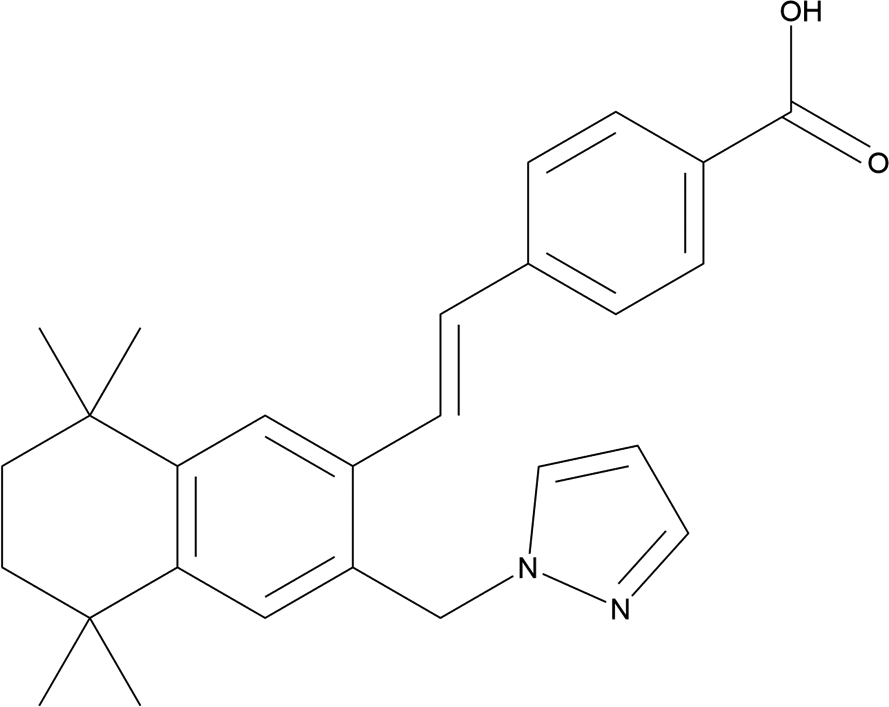
Figure 1. The two-dimensional structure of palovarotene.
We are unaware of any published X-ray powder diffraction data for palovarotene. This work was carried out as part of a project (Kaduk et al., Reference Kaduk, Crowder, Zhong, Fawcett and Suchomel2014) to determine the crystal structures of large-volume commercial pharmaceuticals and include high-quality powder diffraction data for them in the Powder Diffraction File™ (Kabekkodu et al., Reference Kabekkodu, Dosen and Blanton2024).
II. EXPERIMENTAL
Palovarotene was a commercial reagent, purchased from TargetMol (Batch #130336) and was used as received. The white powder was packed into a 0.5-mm-diameter Kapton capillary and rotated during the measurement at ~2 Hz. The powder pattern was measured at 298(1) K at the BXDS-WLE Wiggler Low Energy Beamline (Leontowich et al., Reference Leontowich, Gomez, Diaz Moreno, Muir, Spasyuk, King, Reid, Kim and Kycia2021) of the Brockhouse X-ray Diffraction and Scattering Sector of the Canadian Light Source using a wavelength of 0.819563(2) Å (15.1 keV) from 1.6 to 75.0° 2θ with a step size of 0.0025° and a collection time of 3 minutes. The high-resolution powder diffraction data were collected using eight Dectris Mythen2 X series 1K linear strip detectors. NIST SRM 660b LaB6 (Black et al., Reference Black, Windover, Henins, Filliben and Cline2011) was used to calibrate the instrument and refine the monochromatic wavelength used in the experiment.
The pattern was indexed with N-TREOR (Altomare et al., Reference Altomare, Cuocci, Giacovazzo, Moliterni, Rizzi, Corriero and Falcicchio2013) on a primitive triclinic unit cell with a = 10.29713, b = 11.83345, c = 11.92548 Å, α = 66.277, β = 82.512, γ = 65.386°, V = 1,208.2 Å3, and Z = 2. The space group was assumed to be P-1, which was confirmed by the successful solution and refinement of the structure. A reduced cell search of the Cambridge Structural Database (Groom et al., Reference Groom, Bruno, Lightfoot and Ward2016) yielded no hits.
The palovarotene molecule was downloaded from PubChem (Kim et al., Reference Kim, Chen, Cheng, Gindulyte, He, He, Li and Shoemaker2023) as Conformer3D_COMPOUND_CID_10295295.sdf. It was converted to a *.mol2 file using Mercury (Macrae et al., Reference Macrae, Sovago, Cottrell, Galek, McCabe, Pidcock and Platings2020), and to a Fenske-Hall Z-matrix file using OpenBabel (O’Boyle et al., Reference O’Boyle, Banck, James, Morley, Vandermeersch and Hutchison2011). The crystal structure was solved using Monte Carlo-simulated annealing techniques as implemented in FOX (Favre-Nicolin and Černý, Reference Favre-Nicolin and Černý2002), using (sinθ/λ)max = 0.26 Å−1.
The best solution refined to R wp = 0.0373, but was chemically unreasonable. There was a void, surrounded by hydrophilic groups (the carboxylic acid and pyrazole ring), but no hydrogen bonds. The visual examination of the structure revealed that, if both the pyrazole ring and the carboxylic acid group were rotated by ∼180°, the “free” N and hydroxyl group would become close enough to form an O–H···N hydrogen bond. These manipulations were carried out using Materials Studio (Dassault Systèmes, 2023). Both the original and “flipped” structures were optimized using VASP (Kresse and Furthmüller, Reference Kresse and Furthmüller1996). The “flipped” structure was 14.6 kcal/mol lower in energy than the original, so the final refinement was carried out using the flipped structure.
Rietveld refinement was carried out with GSAS-II (Toby and Von Dreele, Reference Toby and Von Dreele2013). Only the 4.0–50.0° portion of the pattern was included in the refinements (d min = 0.969 Å). All non-H-bond distances and angles were subjected to restraints, based on a Mercury/Mogul Geometry Check (Bruno et al., Reference Bruno, Cole, Kessler, Luo, Motherwell, Purkis and Smith2004; Sykes et al., Reference Sykes, McCabe, Allen, Battle, Bruno and Wood2011). The Mogul average and standard deviation for each quantity were used as the restraint parameters. The aromatic rings were restrained to be planar. The restraints contributed 4.3% to the overall χ 2. The hydrogen atoms were included in calculated positions, which were recalculated during the refinement using Materials Studio (Dassault Systèmes, 2023). The U iso of the heavy atoms were grouped by chemical similarity. The U iso for the H atoms were fixed at 1.3× the U iso of the heavy atoms to which they are attached. The peak profiles were described using the generalized microstrain model (Stephens, Reference Stephens1999). The background was modeled using a three-term shifted Chebyshev polynomial, with broad peaks at 10.21, 14.76, and 41.72° to model the scattering from the Kapton capillary and any amorphous component. An O atom (water molecule) was placed in the void, but its occupancy was refined to only 0.01, and it was deleted from the model.
The final refinement of 130 variables using 18,401 observations and 88 restraints yielded the residual R wp = 0.0294. The largest peak (0.78 Å from C16) and hole (1.62 Å from H52) in the difference Fourier map were 0.32(8) and −0.33(8) eÅ−3, respectively. The final Rietveld plot is shown in Figure 2. The largest features in the normalized error plot are in the shapes and positions of some of the low-angle peaks, as well as at peaks of an unidentified trace impurity.
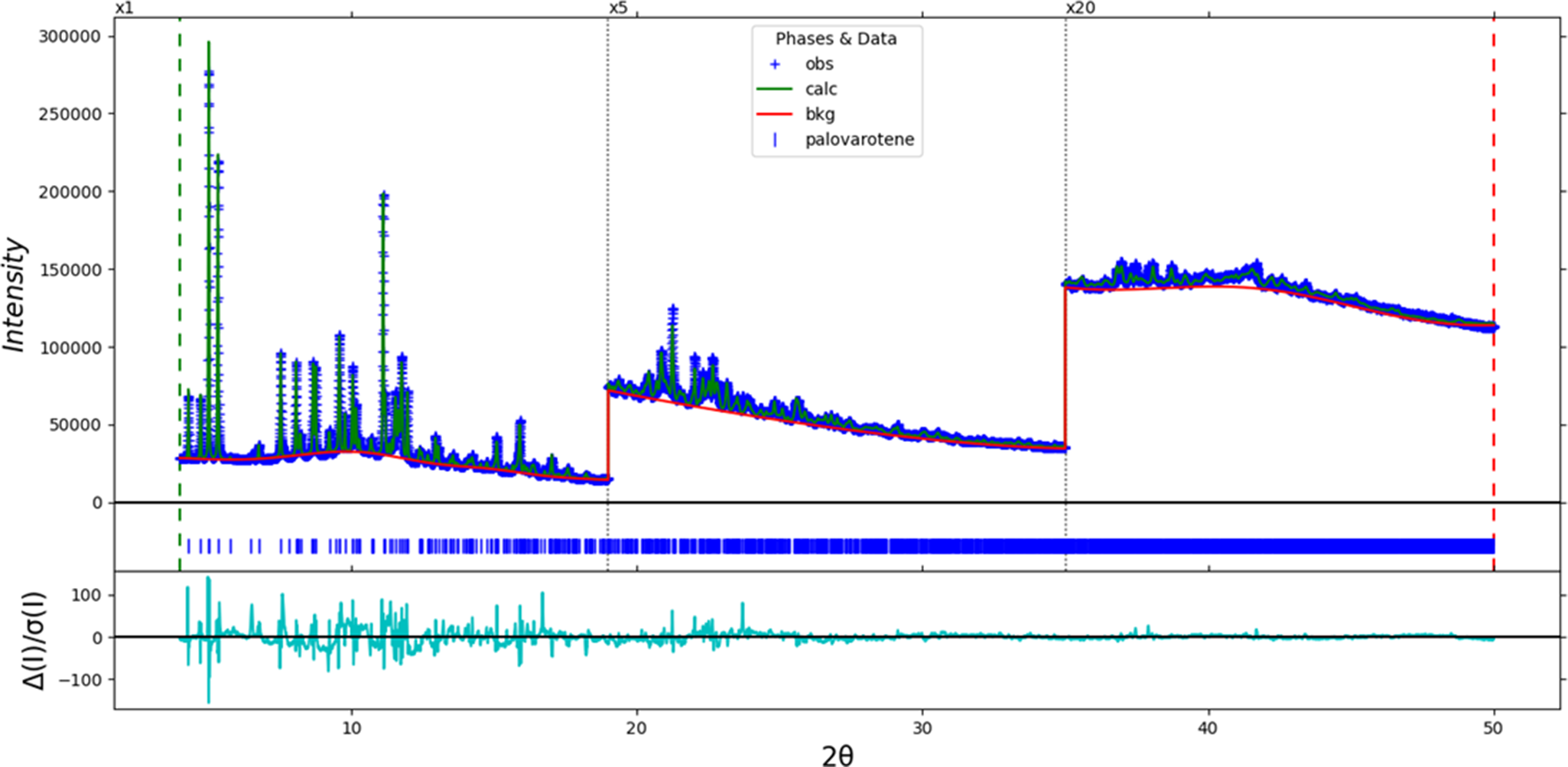
Figure 2. The Rietveld plot for palovarotene. The blue crosses represent the observed data points, and the green line represents the calculated pattern. The cyan curve indicates the normalized error plot, and the red line indicates the background curve. The vertical scale has been multiplied by a factor of 5× for 2θ > 19.0̊ and by a factor of 20× for 2θ > 35.0̊.
The crystal structure of palovarotene was optimized (fixed experimental unit cell) with density functional techniques using VASP (Kresse and Furthmüller, Reference Kresse and Furthmüller1996) through the MedeA graphical interface (Materials Design, 2024). The calculation was carried out on 32 cores of a 144-core (768-GB memory) HPE Superdome Flex 280 Linux server at North Central College. The calculation used the GGA-PBE functional, a plane wave cutoff energy of 400.0 eV, and a k-point spacing of 0.5 Å−1, leading to a 2 × 2 × 2 mesh, and took ~2.0 hours. Single-point density functional calculations (fixed experimental cell) and population analysis were carried out using CRYSTAL23 (Erba et al., Reference Erba, Desmarais, Casassa, Civalleri, Donà, Bush and Searle2023). The basis sets for the H, C, N, and O atoms in the calculation were those of Gatti et al. (Reference Gatti, Saunders and Roetti1994). The calculations were run on a 3.5-GHz PC using eight k-points and the B3LYP functional and took ∼3.0 hours.
III. RESULTS AND DISCUSSION
The root-mean-square Cartesian displacement of the non-H atoms in the Rietveld-refined and VASP-optimized cations is 0.091 Å (Figure 3). The agreement is within the normal range for correct structures (van de Streek and Neumann, Reference van de Streek and Neumann2014). The asymmetric unit is illustrated in Figure 4. The crystal structure contains a void (Figure 5). Placing an O atom (water molecule) in this void resulted in a refined occupancy of ∼0.01, so it was removed from the model. The possibility of hydration/solvation of palovarotene should be remembered. The remaining discussion will emphasize the VASP-optimized structure.
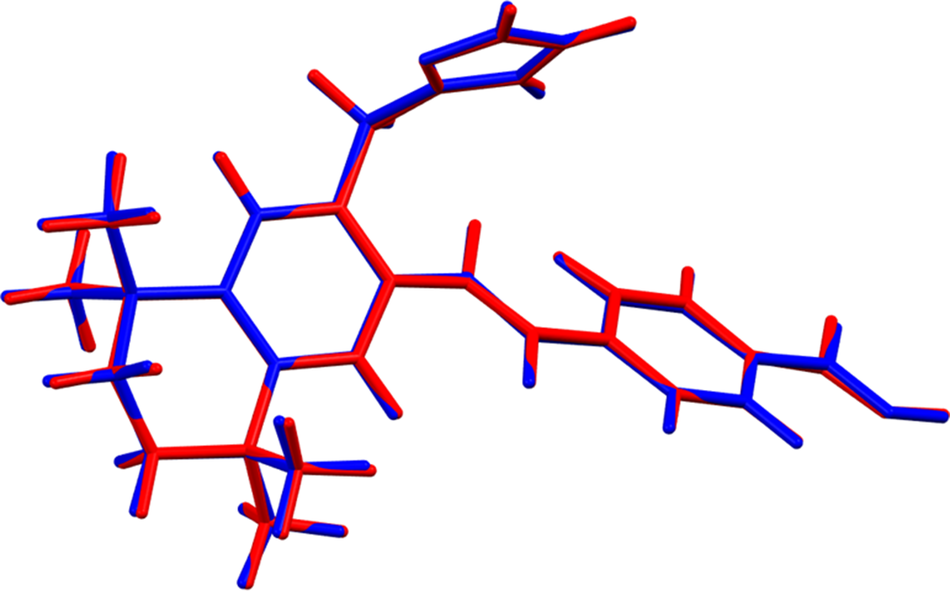
Figure 3. Comparison of the Rietveld-refined (red) and VASP-optimized (blue) structures of palovarotene. The root-mean-square Cartesian displacement is 0.091 Å. Image generated using Mercury (Macrae et al., Reference Macrae, Sovago, Cottrell, Galek, McCabe, Pidcock and Platings2020).
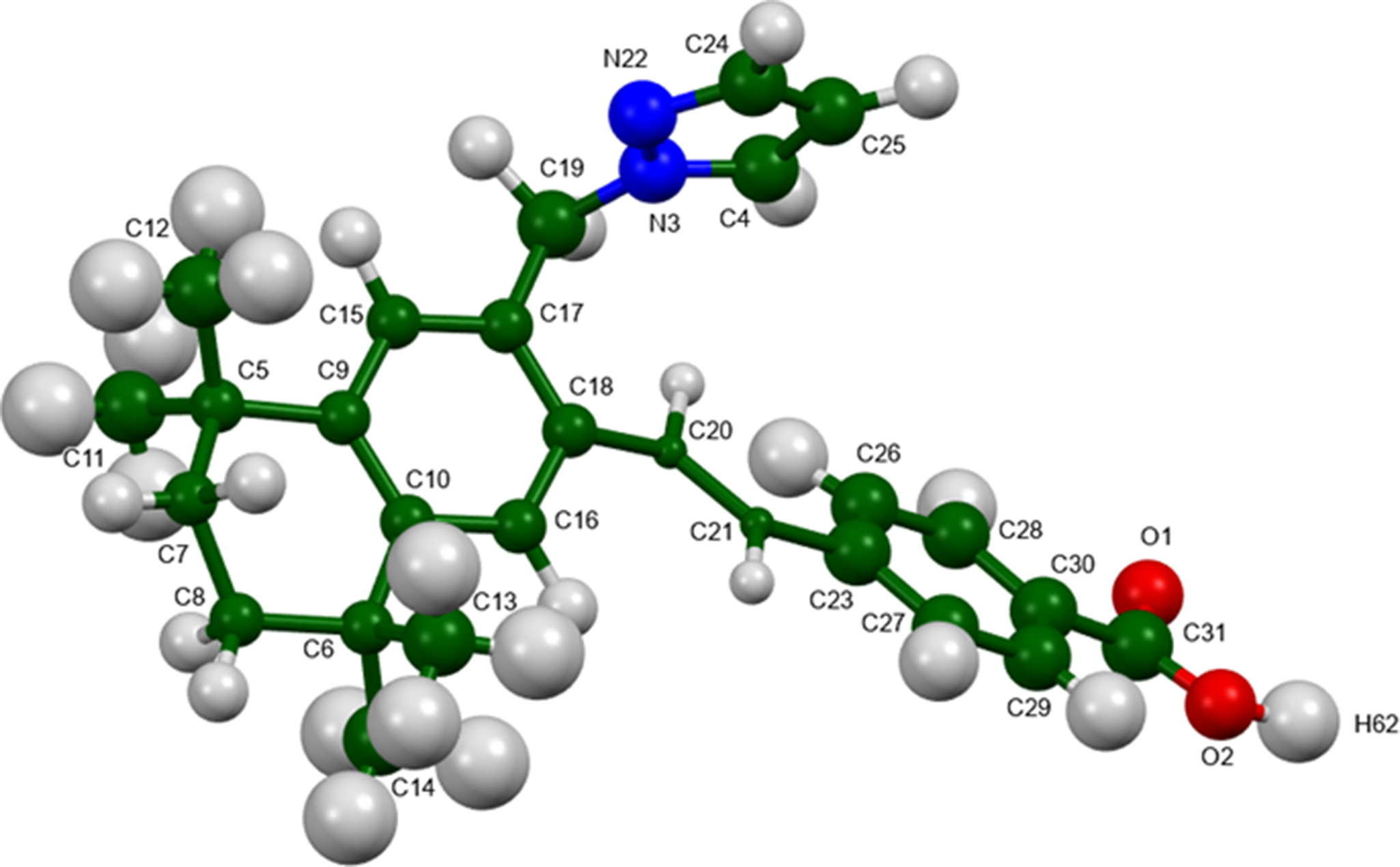
Figure 4. The asymmetric unit of palovarotene, with the atom numbering. The atoms are represented by 50% probability spheroids. Image generated using Mercury (Macrae et al., Reference Macrae, Sovago, Cottrell, Galek, McCabe, Pidcock and Platings2020).
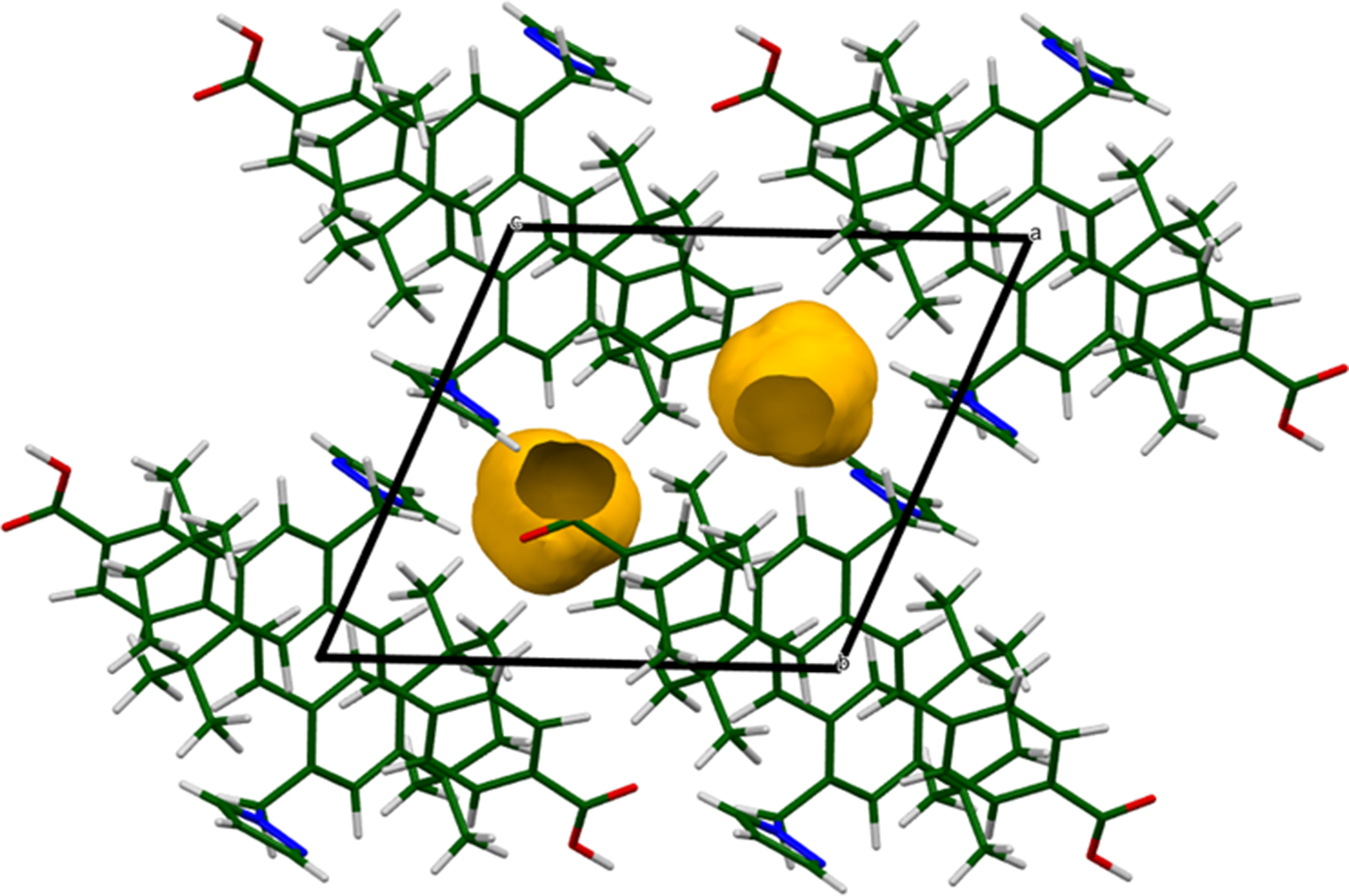
Figure 5. The crystal structure of palovarotene, viewed down the a-axis. The yellow surface indicates the void (probe radius = 1.2 Å). Image generated using Mercury (Macrae et al., Reference Macrae, Sovago, Cottrell, Galek, McCabe, Pidcock and Platings2020).
All of the bond distances, bond angles, and torsion angles fall within the normal ranges indicated by a Mercury Mogul Geometry check (Macrae et al., Reference Macrae, Sovago, Cottrell, Galek, McCabe, Pidcock and Platings2020). Quantum chemical geometry optimization of the isolated molecule (DFT/B3LYP/6-31G*/water) using Spartan ‘24 (Wavefunction, 2023) indicated that the observed solid-state conformation is 4.9 kcal/mol higher in energy than a local minimum, which has a very similar conformation. The global minimum-energy conformation (MMFF force field) is only 0.6 kcal/mol lower in energy but has a different orientation of the pyrazole ring, showing that intermolecular interactions are important to determining the observed conformation.
The crystal structure (Figure 6) consists of chains of hydrogen-bonded palovarotene molecules along the <0,−1,1 > axis. The mean planes of the phenyl, pyrazole, and the aromatic ring of the dihydronaphthalene system are 11, −4, 1; 2, 15, 8; and 6, 3, 5, respectively. The Mercury Aromatics Analyser indicates strong interactions between the phenyl ring and the dihydronaphthalene system (distance = 4.51 Å), and weak dihydronaphthalene–dihydronaphthalene and phenyl–phenyl interactions of 7.56 and 8.47 Å.

Figure 6. The crystal structure of palovarotene, viewed down the b-axis. Image generated using Diamond (Crystal Impact, 2023).
Analysis of the contributions to the total crystal energy of the structure using the Forcite module of Materials Studio (Dassault Systèmes, 2023) indicates that angle distortion terms dominate the intramolecular energy, as might be expected for a molecule containing a fused ring system. The intermolecular energy is dominated by electrostatic attractions, which in this force-field-based analysis include hydrogen bonds. The hydrogen bonds are better discussed using the results of the density functional theory (DFT) calculation.
There is only one classical hydrogen bond (Table I). This O2–H62···N22 hydrogen bond links the molecules into chains with a graph set C1,1(14) (Etter, Reference Etter1990; Bernstein et al., Reference Bernstein, Davis, Shimoni and Chang1995; Shields et al., Reference Shields, Raithby, Allen and Motherwell2000). Several inter- and intramolecular C–H···O hydrogen bonds (to both O atoms of the carboxylic acid group) also contribute to the lattice energy.
TABLE I. Hydrogen bonds (CRYSTAL23) in palovarotene
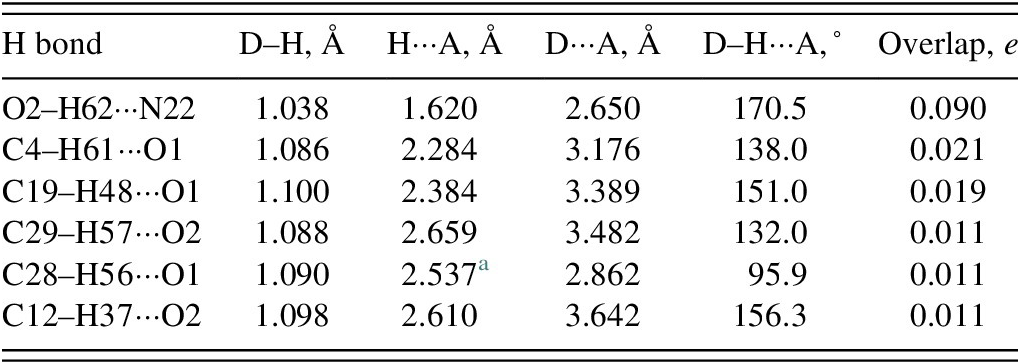
a Intramolecular.
The volume enclosed by the Hirshfeld surface of palovarotene (Figure 7; Hirshfeld, Reference Hirshfeld1977; Spackman et al., Reference Spackman, Turner, McKinnon, Wolff, Grimwood, Jayatilaka and Spackman2021) is 593.93 Å3, 98.45% of the unit cell volume. The packing density is thus fairly typical. The only significant close contacts (red in Figure 7) involve the hydrogen bonds. The volume/non-hydrogen atom is larger than normal at 19.4 Å3.
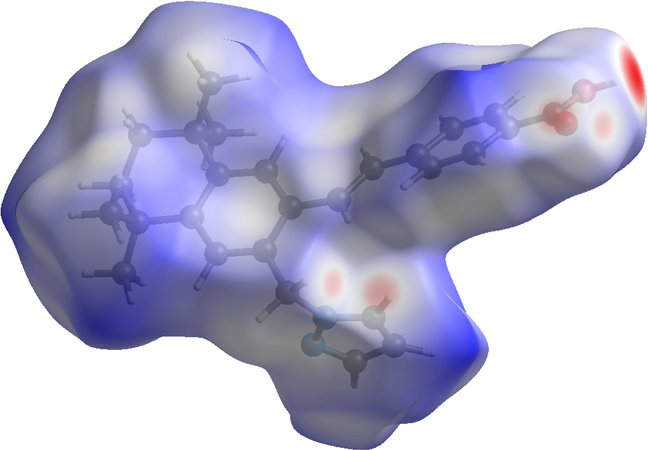
Figure 7. The Hirshfeld surface of palovarotene. Intermolecular contacts longer than the sums of the van der Waals radii are colored blue, and contacts shorter than the sums of the radii are colored red. Contacts equal to the sums of radii are white. Image generated using CrystalExplorer (Spackman et al., Reference Spackman, Turner, McKinnon, Wolff, Grimwood, Jayatilaka and Spackman2021).
The Bravais–Friedel–Donnay–Harker (Bravais, Reference Bravais1866; Friedel, Reference Friedel1907; Donnay and Harker, Reference Donnay and Harker1937) algorithm suggests that we might expect isotropic morphology for palovarotene. A second-order spherical harmonic model was included in the refinement. The texture index was 1.010(0), indicating that the preferred orientation was not significant in this rotated capillary specimen.
DEPOSITED DATA
The powder pattern of palovarotene from this synchrotron dataset has been submitted to the International Centre for Diffraction Data (ICDD) for inclusion in the Powder Diffraction File. The Crystallographic Information Framework (CIF) files containing the results of the Rietveld refinement (including the raw data) and the DFT geometry optimization were deposited with the ICDD. The data can be requested at pdj@icdd.com.
ACKNOWLEDGMENTS
We thank Adam Leontowich for his assistance in the data collection and Megan Rost (ICDD) for laboratory data collection before the specimen was sent to CLS.
FUNDING STATEMENT
Part or all of the research described in this paper was performed at the Canadian Light Source, a national research facility of the University of Saskatchewan, which is supported by the Canada Foundation for Innovation (CFI), the Natural Sciences and Engineering Research Council (NSERC), the Canadian Institute of Health Research (CIHR), the Government of Saskatchewan, and the University of Saskatchewan. This work was partially supported by the International Centre for Diffraction Data.
CONFLICTS OF INTEREST
The authors have no conflicts of interest to declare.
